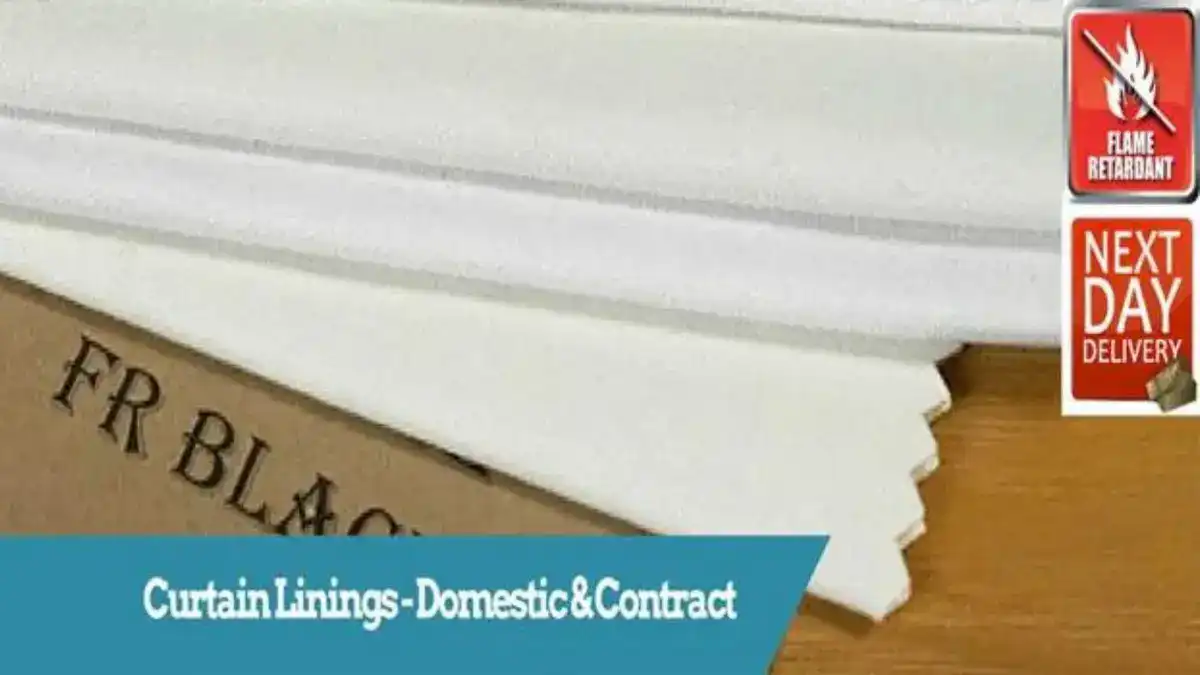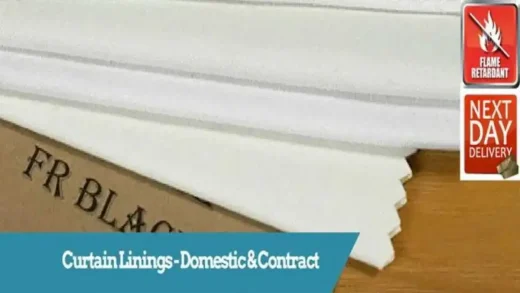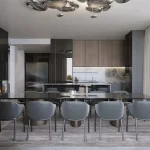Using curtain linings to keep rooms warm or cool advice, Building natural light management, Home noise reduction
Using Curtain Linings to Keep Rooms Warmer in Winter and Cooler in Summer
22 September 2023
Want to save some cash, sleep like a champ, and spruce up those curtains? Well, consider adding curtain linings to your windows. These are like curtain superchargers! You can sew, hook, or clip ’em on, and they’re total game-changers, especially when the weather gets wild.
Why curtain linings are important
Curtain linings aren’t just for looks. They do some practical stuff that’s good for your home and you. Here’s why they matter:
- Temperature Control: They help with room temps. Keep the cold out in winter, the heat out in summer. Less need for AC or heating.
- Light Management: You decide the light. Make it dark for Netflix or bright for work and reading.
- Noise Reduction: They quiet things down. Peaceful for relaxing or concentrating, lively for fun times.
- Protection: Guard your curtains and furniture from sun, dust, and moisture. Save money and stress.
- Enhanced Look: They fancy up your curtains. More style, more elegance, and a chic interior.
How curtain linings work
Curtain linings serve as a barrier between the window and the curtain. They affect how heat, light & sound behave.
The type of fabric, thickness, color, and coating of the lining determine whether it reflects or absorbs these elements.
For instance, a thick, dark lining with a blackout coating reflects heat and light, making the room cool and dark. In contrast, a thin, light lining with a thermal coating absorbs some heat and light, keeping the room warm and bright.
Sound falls under this as well. Most sound waves are absorbed by a thick, heavy liner, keeping the space silent. The space is dynamic because of the light, airy lining that reflects certain sound waves.
Types of curtain linings
There are several curtain lining options available, each having advantages and disadvantages of their own. Here are some of the most typical:
- Standard lining:
It’s a basic cotton-polyester combination that keeps things comfortable, manages light, muffles sound, and lasts a long time. works nicely in most rooms & curtains.
- Blackout lining:
This one excels at completely filtering out light. Perfect for spaces you wish to be completely dark, such as bedrooms or nurseries. Additionally, it offers high durability, noise reduction, and insulation.
- Thermal lining:
Keeps the heat inside with its special reflective coating. Great for chilly spots or drafty windows that need some warmth.
- Interlining:
Slips right between your curtain and lining, giving you extra insulation, noise reduction, and sturdiness. Adds a touch of luxury too, making your curtains look plush. Perfect for sheer direct fabrics or rooms you want to feel snug.
- Solprufe lining:
Protects your curtains from fading and sun damage. Offers a decent balance of insulation, light control, noise reduction, and durability. Ideal for curtains in direct sunlight for a long time.
Benefits of Curtain Linings
Curtain linings have a bunch of benefits for your home and well-being. Here are the main ones:
- Keeps You Comfortable:
Curtain linings help control room temperature. They save you money by reducing the need for heating or cooling.
- Sleep Better:
They manage how much light enters the space. Use lighter linings for a brighter environment during the day or blackout linings for better sleep.
- Quiet and Peaceful:
The use of curtain linings quiets the surroundings. Lighter curtains offer a hint of background sound, while heavier curtains reduce outside noise.
- Protects Your Stuff:
Curtain & furniture linings protect them from moisture, dust, and sun damage. They live longer as a result, saving you money.
- Enhances Style:
Curtain linings offer them greater bulk, structure, and style. They complement your design & give your property a more opulent, sophisticated appearance.
How to Choose the Right Curtain Linings for Your Home
Let’s discuss how to choose the best curtain linings for your home now that you are knowledgeable about them. Here are some things to think about:
- Curtain Type:
Different curtains need different linings. For instance, pencil pleat curtains can use any lining, while eyelet curtains require sewn-in linings.
- Window Type:
The kind of windows you have affects light and heat. Single-glazed windows lose more heat than double-glazed ones, and south-facing windows get more sunlight.
- Room Type:
Different rooms have different needs. Bedrooms need darkness and warmth, kitchens need brightness and ventilation, and home offices need natural light.
- Style Choice:
Linings can affect aesthetics. Blackout linings create a cozy look, thermal linings offer warmth, and interlinings add luxury.
Here are some tips
- Consider your needs: Think about what you want to achieve – energy savings, better sleep, noise reduction, or aesthetics.
- Budget matters: Decide how much you’re willing to spend and compare options for the best value.
- Match existing curtains: Ensure linings complement your curtain color, fabric, and weight.
- Room size perception: Darker, thicker linings make rooms cozier, while lighter, thinner ones create a spacious feel.
- Room style: Choose linings that match or contrast with your room’s theme for a personalized look.
What is lining and interlining curtains?
Ever wondered about curtain upgrades? Well, you’ve got two options: lining and interlining.
Lining is like the bodyguard of your curtains – it shields them from sun damage and adds some oomph to their style.
Interlining, on the other hand, is the secret supporter. It’s that extra layer that keeps things snug, dark, and cozy.
Now, why do you need these upgrades? Here’s the scoop:
- Sun Protection: Bid farewell to fading curtains. Your cloth is shielded from the sun’s damaging rays by lining and interlining.
- Style Boost: They give your curtains a crisp, elegant look. No more floppy drapes!
- Privacy & Light Control: Ever wanted to feel like a superstar behind the curtains? Lining and interlining keep the paparazzi (or just nosy neighbors) at bay.
- Room Temperature Control: It’s like a thermostat for your room. Keep it toasty in winter and cool in summer.
Now, let’s talk fabrics:
- Solprufe Cotton: The tough one. It comes in different colors and rocks at durability.
- Polycotton: Budget-friendly but not a fan of the sun. Best for shade lovers.
- Blackout: Total darkness, perfect for bedrooms and secret lairs.
- Thermal: Keeps you cozy, no matter the season.
- Interlining: The plush upgrade. Adds weight, fullness, and that touch of luxury.
Finally, how do you make it happen?
- Standard Lining: Simple and classic. Lining and curtain sewn together.
- Bonded Lining: The quick fix. No sewing, just bonding.
- Bump Interlining: For that extra pizzazz. Plush and full, like a curtain with a secret.
Using curtain linings to keep rooms warm or cool Conclusion
Curtain linings are layers of fabric attached to your curtains, whether by sewing, hooking, or clipping. They make rooms comfier and nicer, especially in extreme weather.
Benefits of curtain linings include insulation, light control, noise reduction, durability, and style enhancement. They save on energy, improve sleep, lower stress, protect curtains, and spruce up your decor.
Various curtain lining types exist: standard, blackout, thermal, interlining, or solprufe. Choose based on your needs and preferences.
Selecting the right curtain linings depends on your curtain type, window type, room, and style. Follow tips to make the best choice. To install curtain linings, sew, hook, or clip them onto your curtains for a uniform, appealing look.
Learn how curtain linings can keep your room cozy in winter and cool in summer. Feel free to reach out with questions or comments.
Comments on this guide to Using Curtain Linings to Keep Rooms Warmer in Winter and Cooler in Summer article are welcome.
Architecture
Rowanbank Gardens, Corstorphine
Rowanbank Gardens Edinburgh Housing
West Town Vision, Edinburgh
West Town Edinburgh Property Vision
Comments / photos for the Using curtain linings to keep rooms warm or cool guide page welcome.






